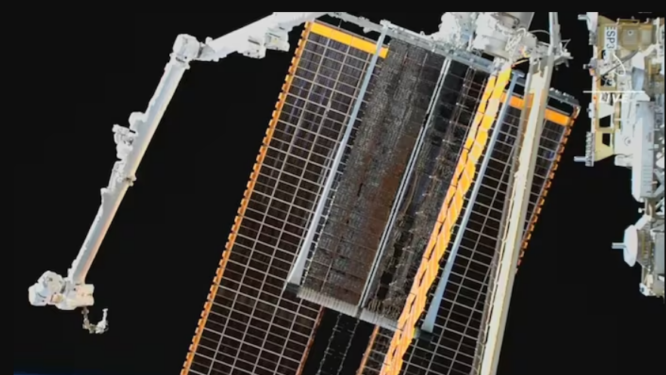Woody Hoburg and Steve Bowen effectively installed an International Space Station Roll-Out Solar Array (IROSA) during a spacewalk.
The Expedition 69 flight engineers augmented the power generation for the 1B power channel on the station’s starboard truss during a 5 hour and 35 minute spacewalk.
According to NASA, the new solar panel is 60 feet long and 20 feet wide, and each new panel produces more than 20 kilowatts of electricity, resulting in a 30 percent increase in power production over the station’s existing arrays.
IROSA employs a new design feature
IROSA employs a novel design with a lightweight, flexible structure resembling a blanket, allowing for simpler transportation and deployment on space missions, as well as a substantial increase in power generation efficiency.

IROSA’s enhanced efficacy can be attributed to its higher solar energy-to-electricity conversion rate. The solar arrays’ malleable design enables them to extend out like a carpet, maximizing the amount of exposed surface area to sunlight. This increased surface area captures more solar energy, which is then converted into electricity to meet the station’s power needs.
This increase in power generation will not only support the station’s expanding scientific and technological needs, but will also allow for the future addition of new modules and experimental apparatus.
NASA and Boeing are working on a plan for a fourth set of roll-out arrays to further augment the International Space Station’s power supply following the successful installation of the new panel. The panels will be transported to the space station in 2025, making them the seventh and eighth to be deployed on the orbiting laboratory.
“This was the 265th spacewalk in support of space station assembly, maintenance, and enhancements. “This was the second spacewalk for Hoburg and the tenth for Bowen, tying him with Mike Lopez-Alegria, Bob Behnken, Peggy Whitson, and Chris Cassidy for the most spacewalks by a US astronaut,” NASA said in a statement.

